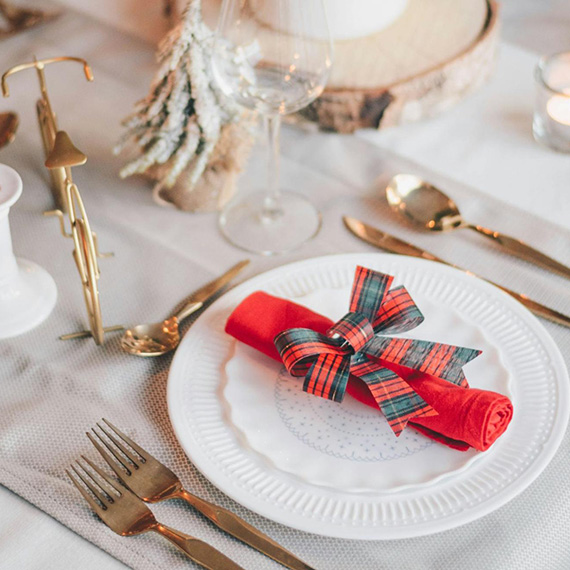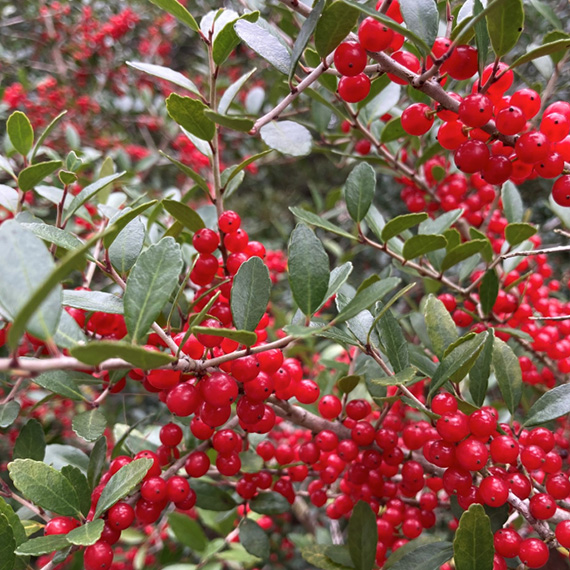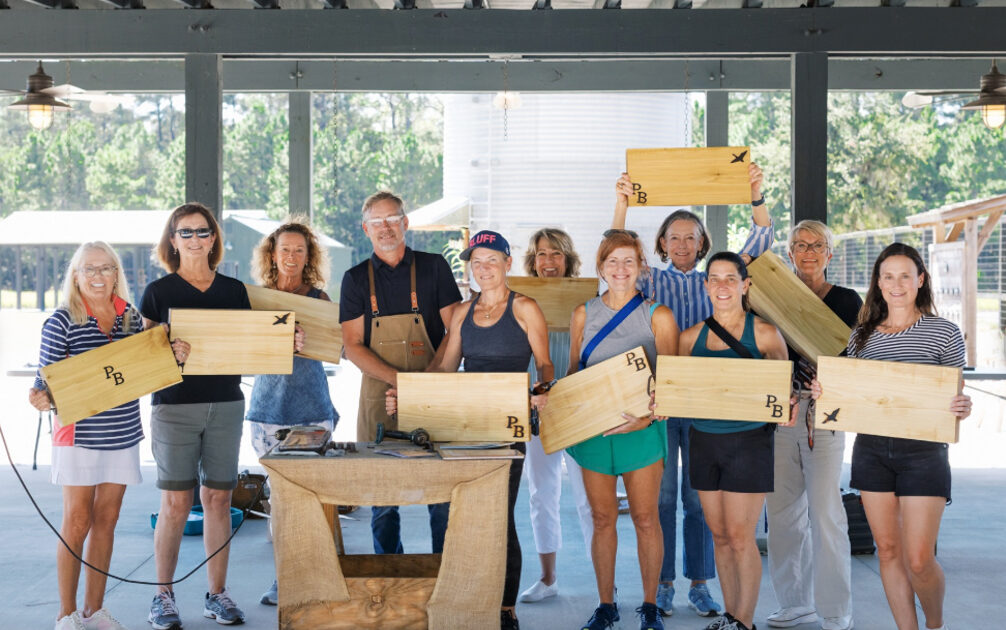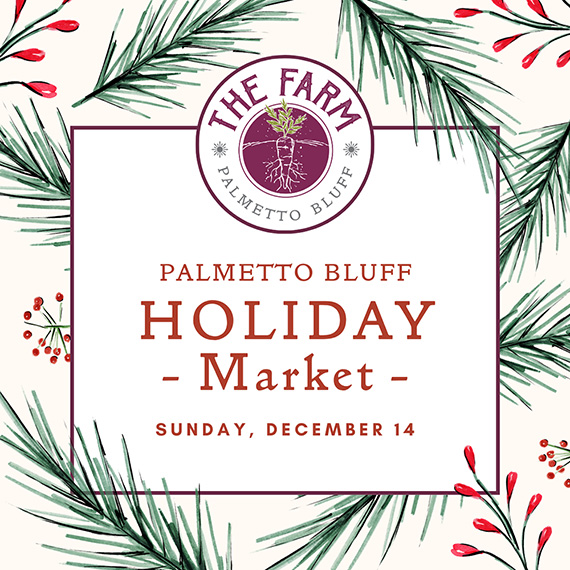Palmetto Bluff Real Estate Company Sales Office
Office Hours
Monday-Friday 9am - 5pm
Saturday 9am - 4pm
Sunday 12 - 4pm
Saturday 9am - 4pm
Sunday 12 - 4pm
One of the most striking scenes in film history is in The Wizard of Oz when Dorothy walks from the dreary gray of Kansas into the Technicolor beauty of Munchkinland. In 1939, it was not only a powerful visual, but a sea change of how movies could—and should—be made.
In the art of cooking, color has the same dramatic effect.
The humble beginnings of masters such as Jacques Pépin and Julia Child brought us “modern pop” food artists including Paula Deen, Rachael Ray, and Guy Fieri. While we may fawn over how our favorite chef cuts an onion or dresses a plate, it is the color that has us infatuated. We know Jamie Oliver’s perfectly seared steak tastes better than the gray (or black) lump we return from the grill. Veggies on our stoves don’t glisten, pop, or char like those in Ree Drummond’s pioneer kitchen.
What if they could?
Cast iron is a tool met by novice cooks like those seeing an easel and oil paints. Sure, one has a rough idea of what to do with the tools, but most aren’t comfortable enough to hop in and start painting our own happy little trees.
Isaac Morton of Smithey Ironware in Charleston has set out to put the artistry of cast iron into the hands of home cooks once again. His pans are sold nationally and are a fixture at Music to Your Mouth.
“I got started out of a passion for vintage cast iron,” Morton said. “I would collect, refurbish, and give away pans that were made 100 years ago. I wondered why modern pans weren’t made in a modern, polished style.”
It took a lot of failure and learning for Morton to recreate the work of cast-iron masters from a previous era.
“We spend a lot of time finishing and polishing the surface of our pans,” Morton said. “So, they are really smooth, which makes for a pan that is easier to clean and as nonstick as naturally possible.”
The benefit of cooking with cast iron is the high, consistent heat. Morton mentioned searing steaks and frying burgers as great foods to try out, but he had a surprising entry for what might turn nonbelievers into devotees: mushrooms.
“It’s really important that mushrooms are cooked over high heat or on a surface that holds heat well,” Morton said. “Mushrooms hold a lot of moisture and release it while cooking.”
Much like the Wicked Witch, water is the death of well-cooked foods. It’s the difference between frying or roasting something and essentially steaming it.
What often keeps people from stepping into the magical world of cast iron are the many confusing dos and don’ts—especially when it comes to maintenance.
“Far and away, the most common misconception,” Morton said, “is that you shouldn’t use soap with a cast-iron skillet, but a bit of soap after each use won’t cause any problems.”
It’s really as simple as washing the pan with care and then making sure its fully dried and oiled, another point of contention.
“People get bent out of shape,” Morton continued, “but any oil can be used. Just bring it near or above its smoke point and only use a small amount, painting your pan with a really thin layer.”
The best thing one can do to take care of a new skillet? Cook in it!
“Your first few dishes,” Morton said, “cook ground beef and onions. The combination of fat and sugars helps create a really nice base around the seasoning.”
Morton’s favorite dish, however, is rack of lamb, which he believes is a dish near impossible to cook properly without cast iron. He seasons with rosemary, salt, and pepper before searing on the stovetop. Then, everything goes into a 400-degree oven until it’s a nice medium-rare.
He also spoke glowingly of a tradition his family has been creating on weekends: making Dutch babies. A hybrid between a pancake and a crepe, this sweet breakfast is best served right out of a cast-iron skillet, just like a good cornbread. Without a hot pan that holds its heat, the batter can’t get deliciously golden brown.
“Don’t get discouraged,” Morton said to aspiring cast-iron artists. “Cast iron is a marathon. Over time, it just gets better and better.”
%GALLERY%

Warm, fragrant, and deeply comforting, Chef Beth’s Southern Sausage & Sage Stuffing is a holiday classic that brings together rich pork sausage, fresh herbs, and toasted bread for the ultimate savory side dish. Studded with green apples and aromatic vegeta...

As December settles over Palmetto Bluff, it brings softer light, cooler mornings, and the natural beauty of native evergreens and winter berries that define the Lowcountry landscape. Palmetto Bluff Conservancy’s Education and Outreach Manager, Aaron Palmier...

In 2025, Palmetto Bluff welcomed new neighbors and old friends, groundbreakings, and long-awaited openings. From inspired Club gatherings and elevated programming to the creation of our latest golf course, the year was defined by connection and excitement for ...

There is something serene about waking up to shimmering water, the stillness of the woods, or the sweep of marsh and sky right outside your window. Even without stepping outside, science shows that simply seeing nature from home can meaningfully improve mental...

The Ultimate Choice: Building vs Buying a Home in Palmetto Bluff For those searching for Palmetto Bluff homes for sale, this common question often arises: Should you choose an existing residence, or embrace the opportunity to build your own? While a complet...

A Complete Guide to South Carolina Winter at Palmetto Bluff South Carolina's winter is unlike any other on the East Coast. While many travelers search for “South Carolina winter” expecting cooler temperatures and limited outdoor options, the Lowcountry revea...

River Road: Where Lowcountry Beauty Meets Elevated Everyday Living Tucked gracefully between Wilson Village and Moreland Village, River Road is one of Palmetto Bluff’s most immersive communities. It's where the pace of life seems to soften, classic Southern ...

Sunday, December 14 | 9am to 1pmVillage GreenThe season’s most festive farmers market, the Holiday Farmers Market, comes to Wilson Village on Sunday, December 14, from 9am to 1pm. All are welcome to visit and experience the magic of holidays at the Bluff. The ...

Tucked amid whispering pines and overlooking a tranquil water trail, 11 Lyonia Street is where Lowcountry charm meets modern artistry. The newly built residence redefines Southern living with a balance of craftsmanship and calm. This is a home that feels both ...

The holiday season in the Lowcountry brings crisp air, oaks draped in twinkling lights, and laughter drifting from homes where families and friends gather once again. At Palmetto Bluff, the holidays are more than just a season; they’re a feeling of togethernes...
Learn about the Palmetto Bluff Conservancy and how we keep the vision of our land in place.
On land or water, there is an ever-evolving variety of activities.
We do not attempt to independently verify the currency, completeness, accuracy or authenticity of the data contained herein. All area measurements and calculations are approximate and should be independently verified. Data may be subject to transcription and transmission errors. Accordingly, the data is provided on an “as is” “as available” basis only and may not reflect all real estate activity in the market”. © [2023] REsides, Inc. All rights reserved. Certain information contained herein is derived from information, which is the licensed property of, and copyrighted by, REsides, Inc.